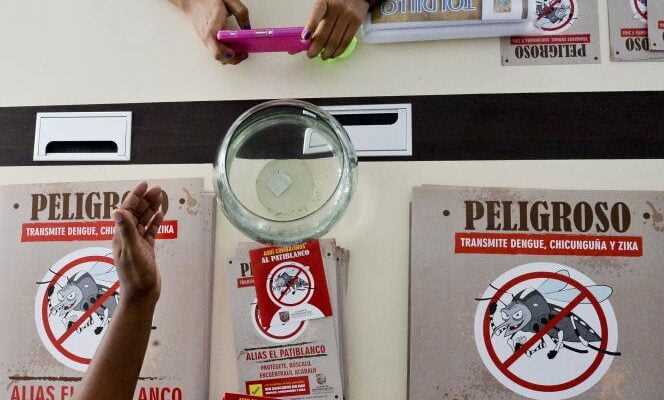In a suburb of Medellin, a red brick building of the University of Antioquia houses a somewhat unusual headquarters. In laboratories, Ivan Dario Velez and his team raise an astonishing army: squadrons of mosquitoes destined to fight one of the ten worst scourges of global public health, according to the World Health Organization (WHO), dengue fever. Because, before being released by the thousands, these insects were transformed into winged Trojans: they carry in their entrails a bacterium which prevents the virus vector of the disease from being transmitted, by bite, to the man.
Between 2015 and 2019, testing had been carried out in this Colombian city and in its suburb Bello, and the final results, soon to be published, show a very sharp decrease in cases of contamination. Since November 2021, it is Cali’s turn (400 km to the south), very affected by dengue fever, to see swarms of saving hexapods sweep over her, raised in the canvas cages of the Medellin labs, then transported in bottles in PET.
Hidden in these mosquitoes, the Odysseus from this story has a name: Wolbachia pipientis. It is a bacterium discovered in 1924, which infects 60% of arthropods and lives in symbiosis with its host, in the cytoplasm of its cells. Scientists observed that its presence prevented the transmission of dengue, Zika or chikungunya viruses. They then thought that forcing the introduction of this bacteria into the mosquito Aedes aegypti, known precisely to be the vector of these arboviruses, without being a natural host of Wolbachia, could provide a solution. In 2006, Scott O’Neill, a biologist at Monash University in Australia, was the first succeeds in this manipulation. He thus creates a line of mosquitoes carrying the bacteria, which is also transmitted in the eggs of the females.
Targeted females
The use of these insects can then theoretically take two forms. If male mosquitoes carrying Wolbachia are released into the environment and mate with females that do not have the bacteria, the eggs will not hatch. Release large numbers of males to Wolbachia thus makes it possible to very strongly reduce populations ofAedes aegypti, their reproductive path being blocked.
Tests using this method have been carried out in various countries (China, Singapore, United States), with certain success, especially since it has another advantage: male mosquitoes do not bite! “But the downside is that it is difficult to eliminate all the targeted mosquitoes in a targeted place, so that the intervention has to be repeated”, explains Scott O’Neill. Not to mention the fact that it is a question of identifying by their sex the mosquitoes to be released – which is possible in the laboratory, in several ways, for example according to the difference in size between the male and female larvae.
You have 80.86% of this article to read. The rest is for subscribers only.
